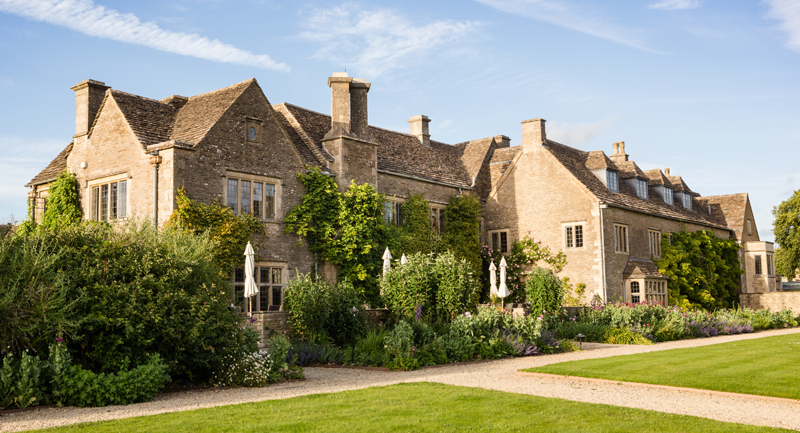
This article is the third in a series designed not to provide ‘A N Other’ opinion about a chef’s output, to be lost in the now sea of increasing ‘noise’ about top end dining. This is something slightly different. In this article the chef will analyse each of their dishes sampled against the five criteria used by Michelin for awarding a Michelin star. How so? Discerning foodies will recall that at The Michelin Guide GB&I launch event for the 2018 Guides, a slide was briefly discussed by Michael Ellis (WW Director of Michelin Guides), which for the first time highlighted the five criteria followed by inspectors in the awarding of Michelin Stars. Michael Ellis confirmed these under interview on that day, as a reminder he explained:-
“The first and most important criteria is the ingredients, all great cuisine starts with great product – the actual product itself is considered for freshness, quality, flavour and texture and so on. The second criteria is mastery of cooking technique. The third criteria is equilibrium and harmony in flavours; the plate must be in balance, so the sauce is not, for example, overpowering the flavour of the fish or that the seasoning of the dish is found to be exactly as it should be. The fourth criteria is regularity (or consistency) and this means starter, main and dessert are all of the appropriate standard and that each are also consistent over time. Finally, value for money is the fifth criteria.”
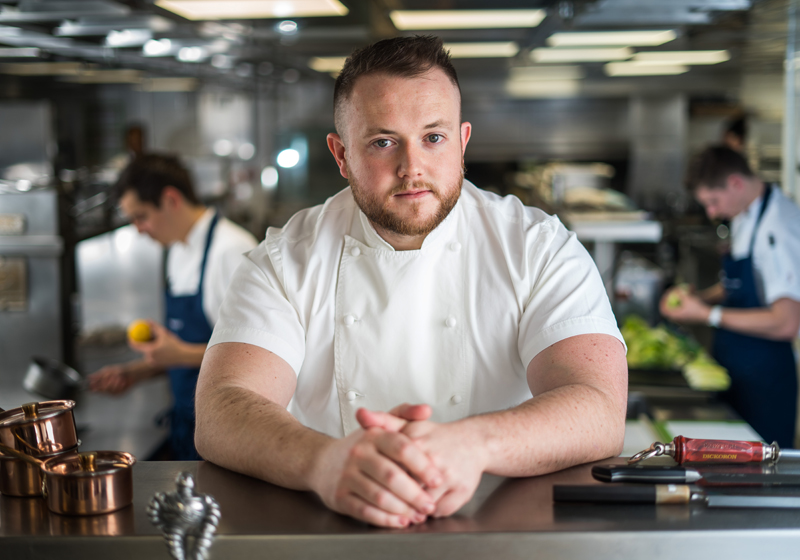
Niall Keating has enjoyed a remarkable eighteen months or so in the context of his 27 years. Last September, with Niall as head chef (and after but a handful of months) Whatley Manor’s The Dining Room was awarded a Michelin star at the launch of the 2018 GB&I Michelin Guide, a moment that signaled the beginning of a life changing sequence of events. Three months later Niall was taking in the Tokyo food scene on holiday with his fiancée, when he received a message from Michelin to get in touch. It transpired that Niall was to be invited to attend the launch event for Michelin Main Cities of Europe 2018 in Budapest and further that he was to be nominated by the GB&I Guide (editor Rebecca Burr) for the inaugural Michelin European Young Chef of the Year 2018. Come the day and come the young chef to win the award; in receipt of the accolade, Niall was described on the day by Michael Ellis (WW Michelin Guides Director) as displaying the right character to represent food in Michelin’s eyes in the present and for the future – a comment that sits proudly with chef Keating. Shortly afterwards Niall and his fiancée Laetizia enjoyed an exclusive use, Michelin starred wedding at Manor House Hotel, Castle Coombe. So good things are happening to Niall Keating and long may that continue.
So, now to the food and a review of those five criteria for a Michelin star. To begin, an explanation from Niall of regularity or consistency of output and value for money criteria that are generic across the menu, followed by a look at each individual dish for provenance, cooking technique and equilibrium on a plate.
In terms of consistency, first of all there is one menu so the kitchen know exactly what will be prepared that service, so whilst the menu does evolve naturally throughout the seasons we have a clear idea in advance of what is going out the door each evening. We document recipes so everyone is singing from the same hymn sheet, at the same time I see every single dish leave that kitchen and will have, for example, taste checked the risotto or the seasoning on every mackerel tartare. I orchestrate the service within the kitchen and with the front of house. I see every plate being dressed and every dish being cooked. It can be really intense on busy weekends or when there’s forty plus covers in The Dining Room but ensuring everything is prepared, tasted and checked keeps me in my safe place. Together these practices ensure there is regularity in the dishes that reach the customer and that is so important to our restaurant.
The aim is to balance out the costing of dishes to provide value and at the same time to make a profitable business. I do have a base percentage to work to that is generous to the business, however this is weighed alongside the Brasserie outlet and the new Green Room – collectively these outlets aim for a target overall kitchen percentage. Where the kitchen target is 100% my responsibility there is also an overall F&B target and certain aspects of the business will do well on beverage. The Dining Room has the one menu which means zero wastage and therefore efficiency and effectiveness. We also have a clear idea of numbers dining the night before and order accordingly; fresh fish and meat need daily deliveries. For the brasserie, the menu offering can be designed to offer (apart from fresh fish) braised meats or dry aged steak that we can keep for a few days. Week to week, month to month, season to season we may find ourselves in a different place in terms of what is possible to offer in the outlets thanks to volumes of business, this is something which is also taken into account. So, in a way, providing the right product at the right price is as much an art as a science. We aim not to get too bogged down in the finer points so as to maintain focus on the creativity of the kitchen to ensure the customers receive the best possible menu from Whatley Manor.
Now to examine, again in Niall’s words, the dishes against the other three criteria, the risotto dish, the tortellini black, the Roquefort and an overview of the very locally sourced fully organic Aberdeen Angus beef.
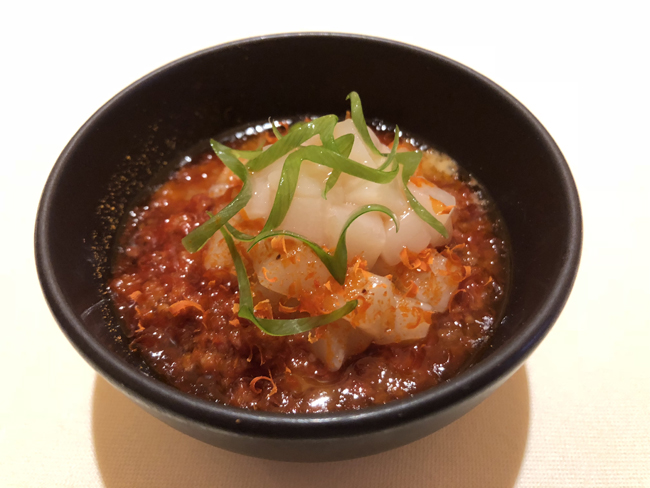
The risotto is potentially a signature for the future, whilst it was on the original launch menu, it came off but has recently come back, having evolved significantly into risotto 2.0. The inspiration was in Copenhagen when simply eating left over rice with XO sauce! To explain, while at Benu (Michelin Three Star, San Francisco) working under chef/patron Corey Lee, something that was done exceptionally well was risotto made from Arborio rice (which is the classic risotto rice from the north Italian region of Piedmont). However this idea was with a more sushi style of rice so it remains in individual grains and never gets any other texture or taste or consistency than that of the grains. So I took polished single grain Arborio rice that stays individually grained through cooking, let it down with a little crème fraiche, Parmesan and a little XO Sauce. This was the origin.
I decided to do something individual with the basic concept instead of an imitation of XO Sauce. This involved chorizo, garlic and shallots that were confit to become fatty and spicy, to balance this out, diced Scallop for extra texture and sweetness plus dried grated scallop roes. To enhance and bring together in “risotto 2.0” we add a kim chi glaze: kim chi is salted, rubbed with spring onions, ginger and Korean chilli flakes before being left to ferment for a couple of weeks. Overall the dish is something I’m so proud to have on the menu at Whatley Manor.
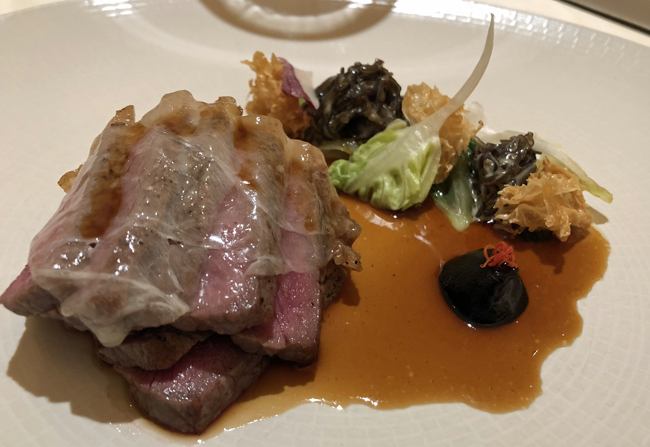
We are in the process of putting on a (very locally) sourced beef dish, the fully organic pedigree Aberdeen Angus are reared literally at the farm next door by Tom Wakefield. The quality of the meat is very exciting indeed and we have a dish in development that will excite diners during this summer. My eyes literally light up thinking and talking about amazing produce that we can find so locally.

The Roquefort dish is a little different. I guess the inspiration came from Bo Bech at Restaurant Geist in Copenhagen, where I first tried blue cheese with caramelised white chocolate. We had a waffle machine in Copenhagen and we’ve fortunately managed to get hold of one here. We do a waffle, Roquefort (blue cheese) baked in the oven topped with caramelized white chocolate with caramel, compote of berries and candied fruits and nuts. The salty and sweet balance each other and the crunch and softness textures contrast.
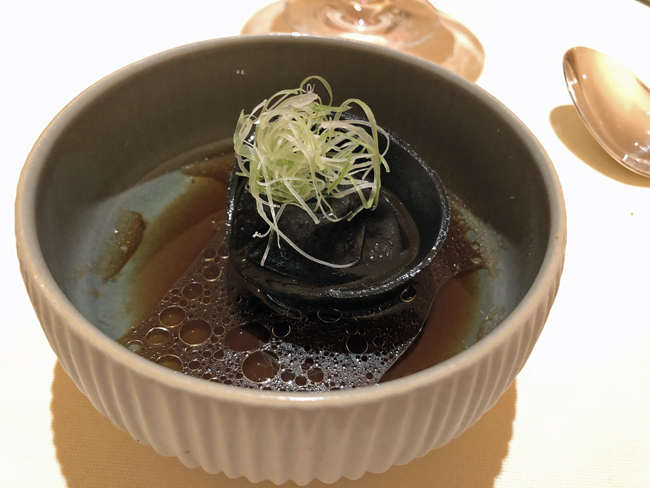
The tortellini black is a nod to a dish from Corey Lee at Benu Restaurant in San Francisco. In general, the creativity and structure in the kitchen was extraordinary – respect, hard work and friendship underlined what that kitchen meant to me. So the tortellini black: Corey Lee does an amazing version of xiao long bao (soup dumplings) which are steamed and are light, encasing meat or shellfish that also contains a liquid that pops in the mouth. So here I take a black pasta, I do a pork farce with pork jelly, and because it traditionally comes with a vinegar dipping sauce I do an acidic black garlic vinegar and split out with black garlic oil.
For certain Niall Keating could not be delivering the success he has enjoyed from this platform without the strength and support from the top. By way of background, sometime around the middle of 2016, the owners were considering a re-investment cum re-launch of the property and looking for a dynamic but safe, strong but gentle, passionate but measured General Manager to take them forward. They found Sue Williams.
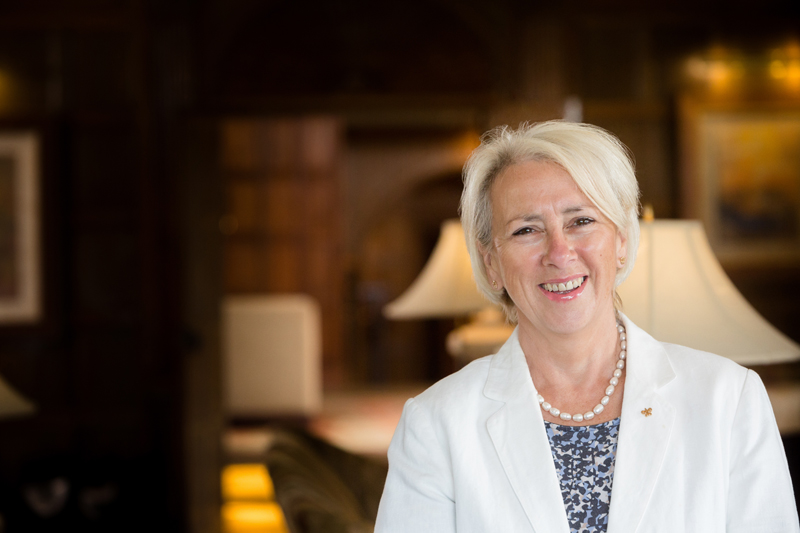
Sue had very successfully taken the decaying shambles left by Von Essen at Cliveden House and managed the re-launch and re-invigoration under the new ownership of the Livingstone brothers. The property was reborn and within a short number of years, fully restored to – if not beyond – its former glories of the halcyon days of the early 1990s. Sue also enjoyed hotel GM experience of Michelin kitchens at Bath Priory and Gidleigh Park as well as years of management development at Le Manoir aux Quat’ Saisons. The extent of Sue’s success at Whatley Manor can partly be measured by her being the current holder of the most prestigious accolade to a Hotel GM in the industry – The Hotelier of the Year Award.
What may customers expect of the food at Whatley Manor? Well at the time of Sue’s arrival the numbers were not so good, in spite of The Dining Room holding two Michelin Stars under Martin Burge. fine dining guide are big fans of (new) classical cooking and Martin’s menus were always a pleasure on visits to Whatley. While Sue was familiar with the character of Niall from his time at Bath Priory, he had subsequently travelled the world of the Michelin firmament, working under some great head chefs and developing the potential to deliver a cooking style that finds influence from three continents, including elements of the most modern of thinking and techniques. So while there existed this potential, energy and bundle of ideas, it could be clearly contrasted to the two Michelin starred, John Burton Race trained veteran.

The leadership inexperience of Niall Keating and the question of the suitability of the expected contrast in the food style, thus remained a brave decision, perhaps a significant country house hotel gamble. Just over a year ago, to test the water, there was a private tasting of the proposed new menu under Niall and one left admiring the boldness of ideas and flavours on a single tasting menu but possibly fearing that this might engender a love it or not effect amongst the regular clientele of such a hotel, especially given its former cuisine style. Perhaps the subsequent months demonstrated a little of that but my view is that two significant things happened. Firstly, the single tasting menu, which itself is an ongoing question of relevance in country house hotels, is now backed up by a strong brasserie offering that provides the opportunity of choice to multi-night diners. Secondly, and far more important, like a fine wine the food has developed layers of sophisticated taste complexity, elegance and accessibility that demonstrates a maturity in Chef Niall Keating beyond his years. This latter development must have caught the eye of Michelin and diners alike to the great benefit of Whatley Manor. It will be fascinating to follow Niall’s progress and continue to sample the creations presented at Whatley Manor and celebrate his progress through the industry over the years to come..



